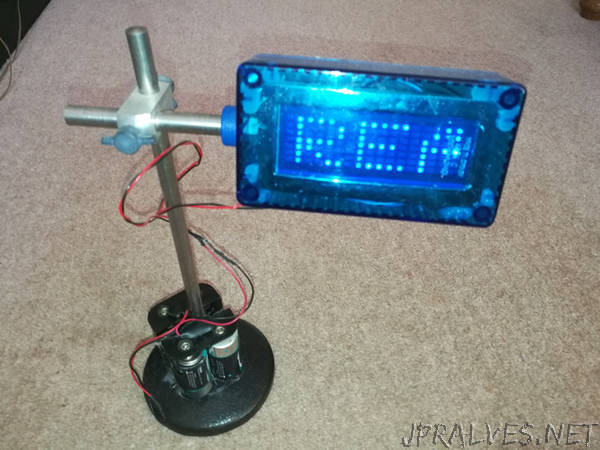
“So a friend of mine gave me an LED Belt Buckle.
It was always an intention of mine to WiFi enable it so that maybe people could send a message to it and it would display that message.
I decided to instead have it display Tweets where it can display tweets of a particular search term, which still allows people to send it a custom message, albeit through Twitter.
Since its WiFi and gets its power from batteries it makes a nice stand alone Twitter message display system, or even a small unit that can be used for events, performances and exhibitions providing audience interaction.
The circuit is built using an ESP8266-01 WiFi module. These are very inexpensive and can be programmed using the Arduino IDE.
The ESP-01 is the smallest and cheapest of the ESP range and only has minimal input and output options. Luckily we only require two outputs to control the buttons on the Belt Buckle so it will service for this project. The Digital Outputs simply go LOW to simulate a press of the two program buttons which are ENTER and PID on my Buckle. Using these buttons manually to program in messages takes a lot of time since each letter of the alphabet has to be scrolled through one by one however when programming using the ESP, messages can be entered much faster and more importantly automatically.
The ESP chips contain a Web Server and Access Point so it can both make Web requests and act as an Access Point to allow configuration via WiFi.
The Access Point Name and Password are pre programmed into the device. When you connect you need to browse to its IP Address and you will then be shown a Configuration Page where you enter in the Twitter Search Term. This can be your Twitter account @name which will result in Tweets directed at you to be displayed or it can be a trending topic or hashtag.
Since the unit is designed to be portable it made sense to include a configuration page where you enter the WiFi Internet Settings. You can then change these easily when you move it to other locations.
There are many versions of these buckles and while most work in a similar way they often have different character sets and programming patterns, thus my code may not be transferable to other buckles.
Unfortunately my Belt Buckle did not have an @ symbol and since its only four characters wide it makes reading messages a little awkward. It is however a cheap and fun project to make since it made use of items I already had.
It forms the backbone of an enhanced device that could utilise a larger LED Display.
It also gave me valuable experience using these very cheap, small and versatile ESP WiFi units.”
